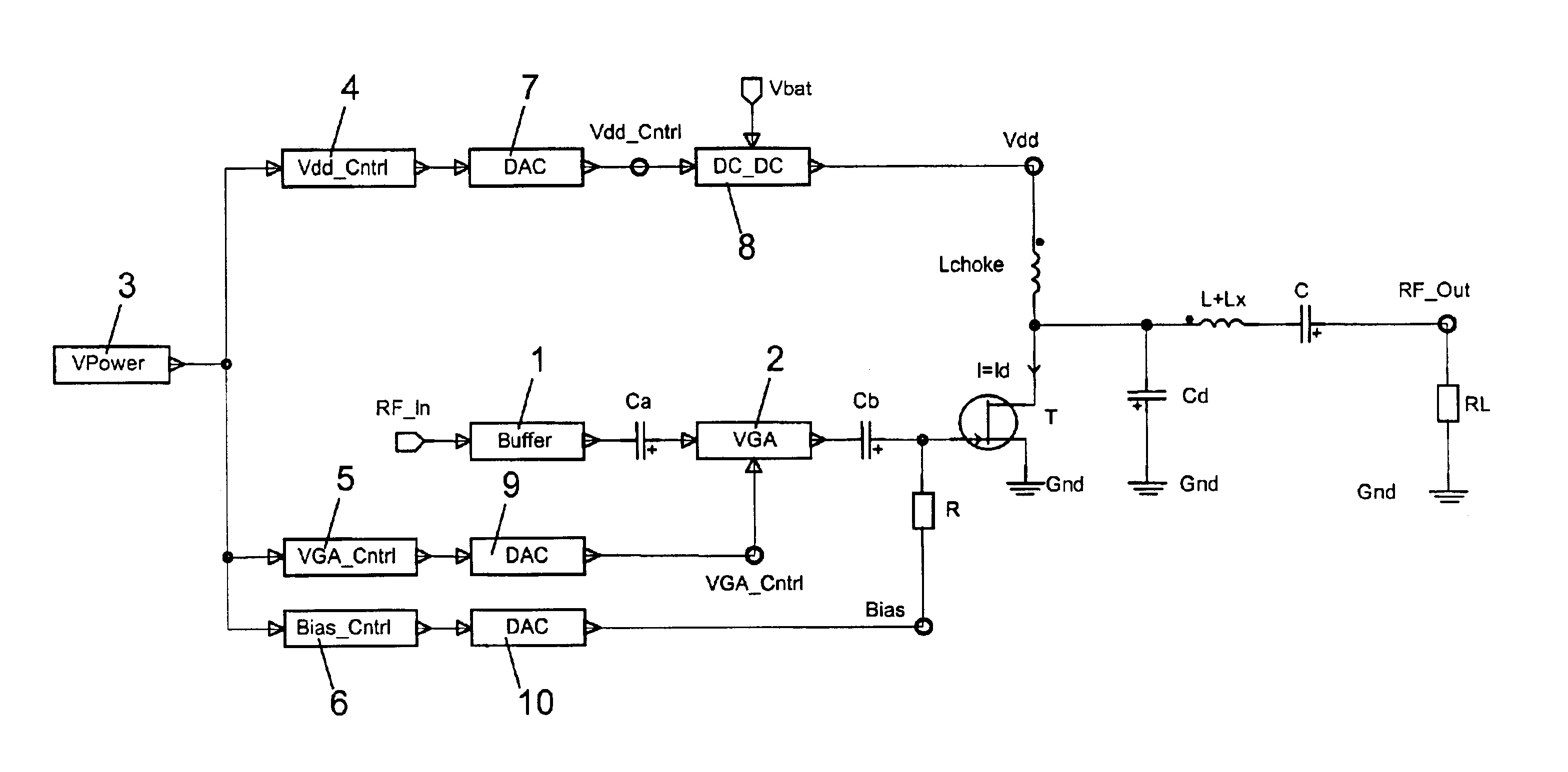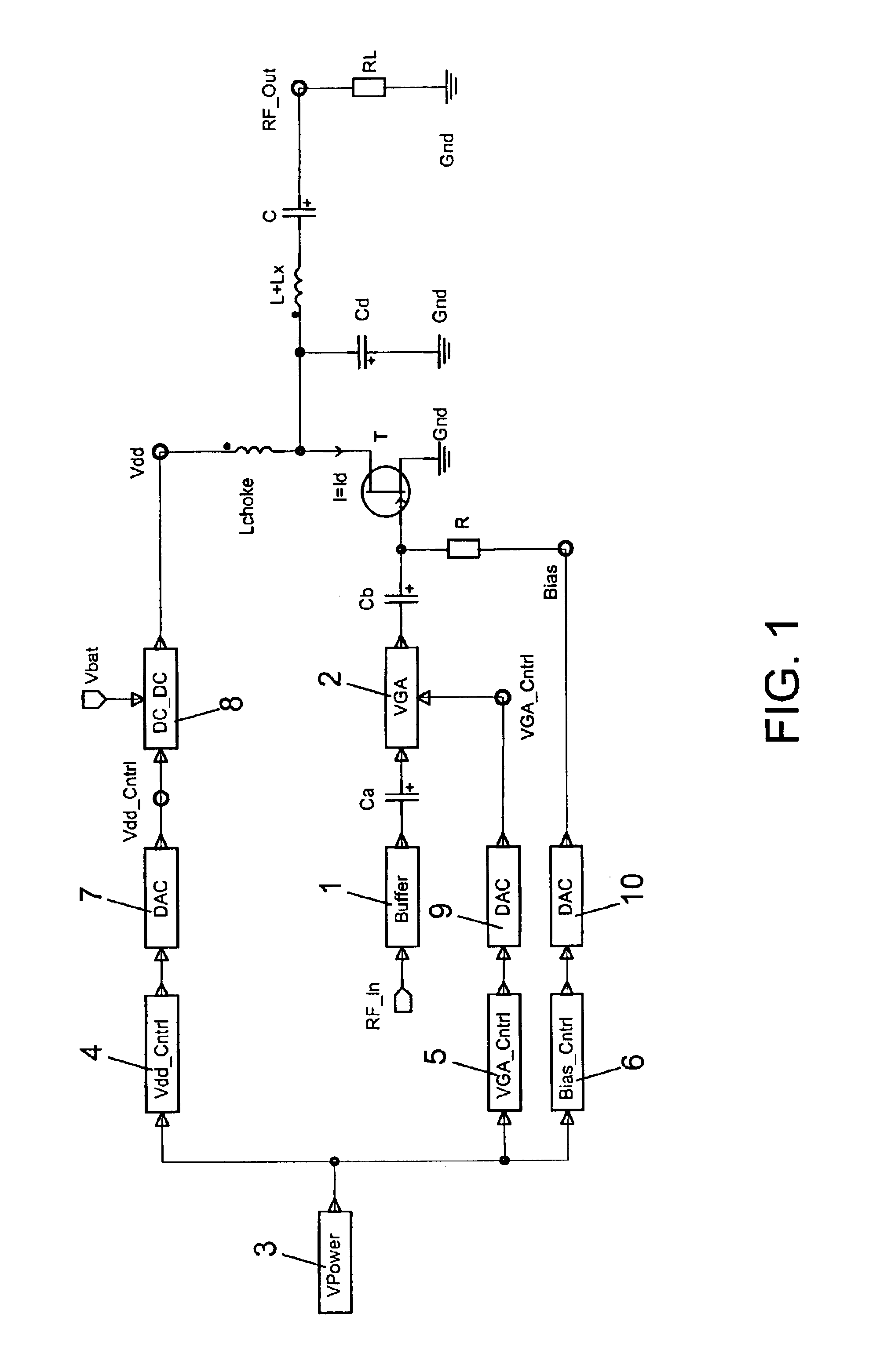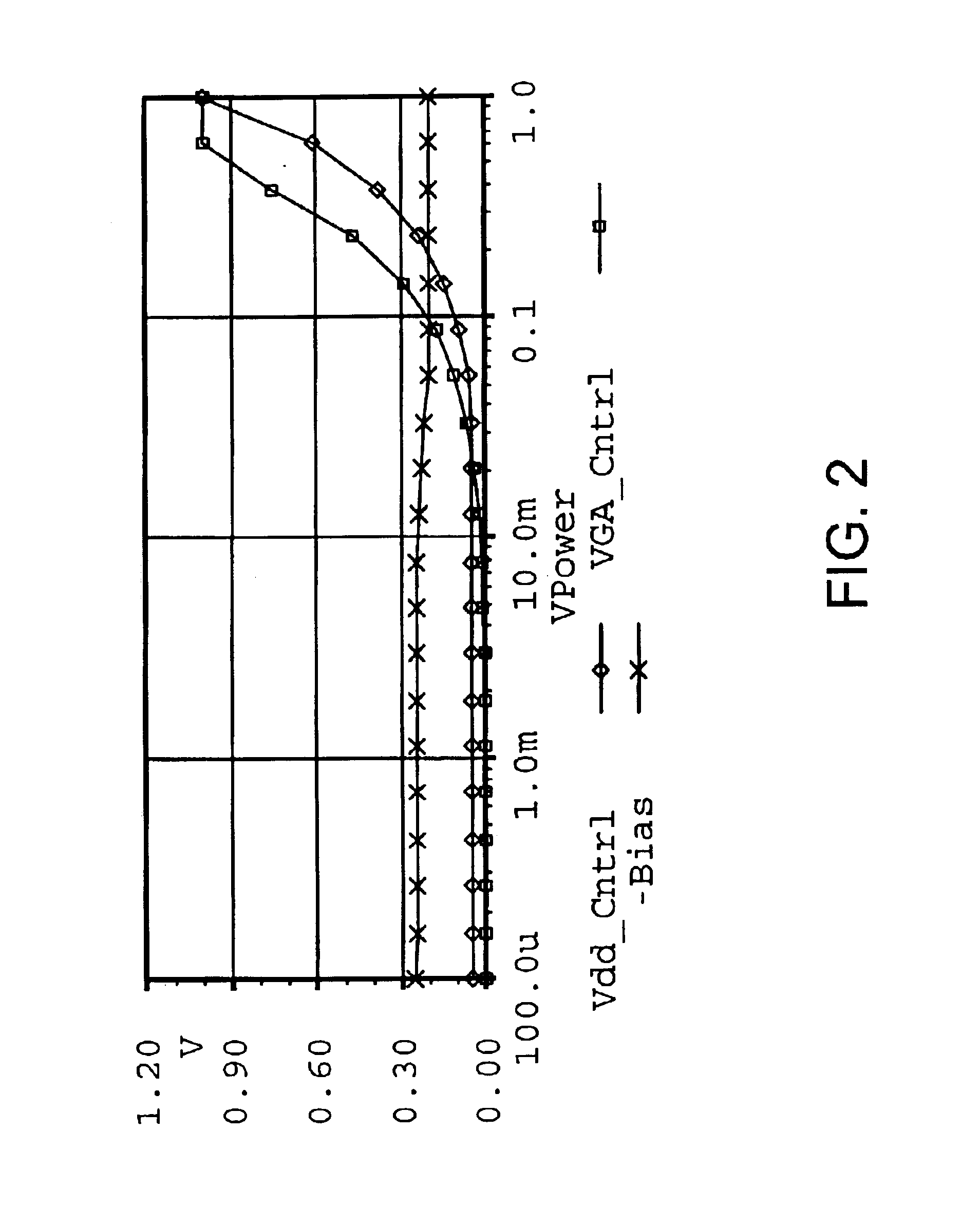Power control for a switching mode power amplifier
a power amplifier and switching mode technology, applied in the direction of automatic tone/bandwidth control, tone control, gain control, etc., can solve the problem of limiting the dynamic range achieved by varying the power supply to the switching mode power amplifier mentioned above, and inherently very non-linear, so as to achieve linear control of power level, preserve the efficiency of the switching mode power amplifier, and achieve higher power levels
- Summary
- Abstract
- Description
- Claims
- Application Information
AI Technical Summary
Benefits of technology
Problems solved by technology
Method used
Image
Examples
first embodiment
[0034]FIG. 1 is a schematic block diagram of a power control structure according to the invention. The structure can be for example a transmitter or a part of a transmitter which is employed for amplifying a constant envelope signal. The average power level of the amplified output signal has to be controllable over a large range.
[0035]The power control structure of FIG. 1 comprises a class-E switching mode power amplifier. The switching mode power amplifier includes a field effect transistor (FET) T. A voltage supply terminal of the switching mode power amplifier is connected via a choke coil Lchoke to the drain of the transistor T. The drain of the transistor T is further connected via a first capacitor Cd to ground Gnd and via a second coil L+Lx and a second capacitor C to the output RF_Out of the switching mode power amplifier. The output RF_Out of the switching mode power amplifier constitutes at the same time the output of the presented structure. The source of the transistor T...
second embodiment
[0058]FIG. 6 is a schematic block diagram of a power control structure according to the invention. The power control structure depicted in FIG. 1 provides a possibility of changing the output power in decibels linearly as a function of a power control voltage VPower represented by a digital control word. The structure depicted in FIG. 6, in contrast, provides a possibility of changing the amplitude of the output signal linearly as a function of an additional amplitude control voltage VAmp represented by a digital control word. At the same time, a power control over a large range is still possible. The structure presented in FIG. 6 constitutes an extension of a conventional EER transmitter.
[0059]The structure of FIG. 6 comprises exactly the same components as the structure of FIG. 1, and these components are also arranged in exactly the same manner as in FIG. 1 except for the power control unit 3. Correspondingly, also the same reference signs as in FIG. 1 were assigned in FIG. 6 to ...
PUM
 Login to View More
Login to View More Abstract
Description
Claims
Application Information
 Login to View More
Login to View More - R&D
- Intellectual Property
- Life Sciences
- Materials
- Tech Scout
- Unparalleled Data Quality
- Higher Quality Content
- 60% Fewer Hallucinations
Browse by: Latest US Patents, China's latest patents, Technical Efficacy Thesaurus, Application Domain, Technology Topic, Popular Technical Reports.
© 2025 PatSnap. All rights reserved.Legal|Privacy policy|Modern Slavery Act Transparency Statement|Sitemap|About US| Contact US: help@patsnap.com



